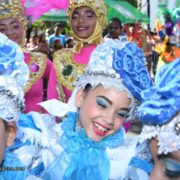Lion Fish ( Pterois ) is a venomous marine fish native to the Indo-Pacific. It is a popular aquarium fish because of its distinctive look, called also zebrafish. There are several species in the Pterois genus, and its control and study is of great importance to the Caribbean because it is an invading predator that causes harm to its non-native ecosystems.
Ecology, Size & Weight
Pterois can live from 5-15 years, and their courtship and mating behavior can be quite complex. Females release two mucus-filled egg clusters frequently, which can contain up to 15,000 eggs. They range in size from 5-45 cm (2-17 inches ) in length, weighing from 0.055 to 2.8 lb. Well known for their beauty, they also sport venomous spines and large tentacles.
Photo Gallery
Lion Fish Prey & Predators
The Lionfish prey mostly on invertebrates, small fish, and mollusks in large amount. They are skilled hunters, using bilateral swim bladder muscles to provide precise control of location in the water column, allowing the fish to alter its center of gravity to better attack prey.
They blow jets of water while approaching prey, apparently to disorient them and cause the smaller fish to instead face the Lionfish. There are few natural predators that will attack them, but Moray eels, Bluespotted cornetfish and large groupers have been observed to pray on the Lionfish.
On Video
Native Habitat & Range
Pterois is native to the Indo-Pacific. They can be found around the seaward edge of reefs and coral, in lagoons and on rocky surfaces commonly to 50m deep. They have been found as deep as 300m as well. They are very territorial towards other reef fish, and there have been documented aggressions towards divers and researchers.
Their native areas range from Southern Japan and South Korea to the East coast of Australia, Indonesia, Micronesia, French Polynesia, and the South Pacific Ocean. It is also found in the Indian Ocean, from Sumatra to Sri Lanka and the Red Sea.
Invasive Range
Two species out of twelve, the red lionfish (P. volitans) and the common lionfish (P. miles) have established themselves as invasive species in the East coast of the United States and the Caribbean. The introduction might have happened in 1992 when hurricane Andrew destroyed an aquarium in Southern Florida, releasing six lionfish into Biscayne Bay.
However, a specimen was discovered off the coast of Dania Beach, South Florida, as early as 1985. Later on, larval dispersal is suggested as the cause for the expansion across the Caribbean.
Lion Fish Control Efforts
NOAA has tried several solutions to control the lionfish population, and understanding how the larvae are dispersed. Removal of the species from the invaded waters can control the expasion, but it would require the harvesting of at least a quarter of its population. Lionfish reproduce monthly, so this effort must be done throughout the entire year.
A campaign by NOAA was put in place to encourage the consumption of its meat, so humans would hunt it more and keep its population numbers down. In Sosua Beach, divers will often spear the fish, and there are efforts to establish a yearly hunting derby similar to the one in Florida. In Sosua, it can be found in many of the Sosua top dive sites, and dive centers organize hunting tours for tourists.
Sources:
- NOAA – What is a Lion Fish
- Oceana – Lion Fish Safe to eat
- Smithsonian – Lion fish Control
- Wikipedia – Lion Fish























